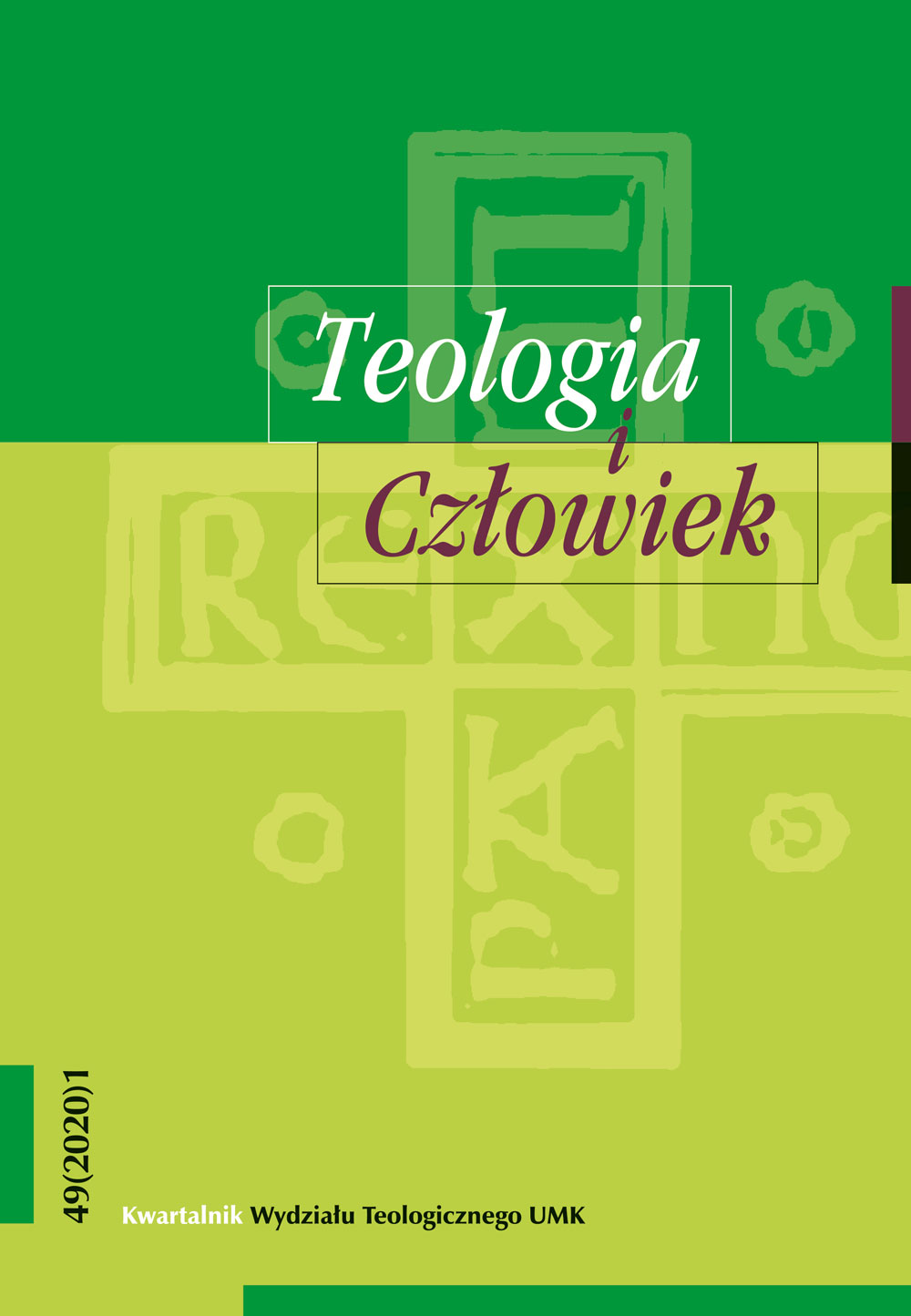Camel’s urine in Muslim theology
DOI:
https://doi.org/10.12775/TiCz.2020.009Keywords
camel’s urine, Hadith, „Prophet’s Medicine”, Prophet MuhammadAbstract
In the paper, role of the camels in history of Arabs and its characteristics is briefly presented emphasizing some important episodes. The introduction necessarily refers to the Hadith as the second after Qur’an source on Muhammad, Islam and Muslim theology. Among six main collections of Hadith, the oldest one was chosen, namely, the one collected by Al-Buẖārī (d. 870). In this book, the Hadith about camel’s urine is presented in 13 versions, from them six variants were chosen to expose the important differences. In the analysis, opinions of Muslim authorities were cited, both classical and the most recent ones. In the last part of the paper, the „Prophet’s Medicine” is discussed, which includes also the camel’s urine. Its importance and actuality can be confirmed by the fact that in Saudi Arabia camel’s urine is sold in cans like that of coca-cola, under the mark bola-cola.
References
Abdalla M., Wielbłąd w teologii arabsko-muzułmańskiej, „Teologia i Człowiek” 42 (2018) 2, s. 145–164. DOI: http://dx.doi.org/10.12775/TiCz.2018.020.
Abdalla A., Losy chrześcijan himjaryckich jemeńskiego miasta Nadżran (VI–X w.) w źródłach arabskich i asyryjskich, w: Arabowie–Islam–Świat, red. M.M. Dziekan, I. Kończak, Łódź 2007, s. 557–569.
Ābādī M. Abī aṭ-Ṭayyib ‘Aun al-ma‘būd - šarḥ sunan abī Dāwud, t. 12, Bejrut 1995.
Albānī (al-), Silsilat al-aḥādīṯ aṣ-ṣaḥīḥa, t. 6, Riad 1996.
‘Asqalānī (al-), Fatḥ al-bārī bi šarḥ ṣaḥīḥ al-imām abī ‘Abdullāh Muḥammad ibn (I)Smā‘īl al-Buẖārī, t. 1, Riad (b.d.w.).
Bayhaqī (al-), As-sunan al-kubrā, t. 7, Mekka 1994.
Bielawski J. (red.), Mały słownik kultury świata arabskiego, Warszawa 1971.
Buẖārī (al), Ṣaḥīḥ al-Buẖārī, Damaszek–Bejrut 2002.
Cheikho L., An-Naṣrāniyya wa ādābuhā bayna ‘Arab al-Ǧāhiliyya, Bejrut 1986, wyd. 2.
Cheikho L., Šu‘arā’ an-naṣrāniyya qabla al-islām, Bejrut 1986, wyd. 4.
Dāwud, Sunan Abī Dāwud, t. 6, Damaszek 2009.
Dziekan M.M., Arabia magica, Warszawa 1993.
Eltegani H.A., Idress H.I.E, Afalā yanẓurūna ilā al-ibili kayfa ẖuliqat, „Sudan Journal of Science and Technology” 8 (2007), 2, s. 25–51.
Ǧauzī (al-) ibn, Al-Muntaẓam fī tārīẖ al-mulūk wa-l-umam, t. 3, Bejrut 1995.
Ǧawziyya (al-) ibn Qayyim, Aṭ-Ṭibb an-nabawī, Bejrut 1957.
Hauziński J., Burzliwe dzieje kalifatu bagdadzkiego, Warszawa–Kraków 1993.
Ibn Chaldun, Al-Muqaddima, t. 2, Damaszek 2004.
Ibn Hišām, As-Sīra an-nabawiyya, t. 1, Bejrut 2000.
Ibn Kaṯīr, Al-Bidāya wa-n-nihāya, t. 5, Bejrut 1996.
Ibn Māǧa, Sunan ibn Māǧa, Bejrut 1954.
Iṣfahānī (al-), Abū Na‘īm, Mausū‘at aṭ-ṭib an-nabawī, Bejrut 2006.
Koran, tłum. J. Bielawski, Warszawa 1986.
Kościelniak K., Tradycja muzułmańska na tle akulturacji chrześcijańsko-islamskiej od VII do X wieku: Geneza, historia i znaczenia zapożyczeń nowotestamentowych w hadisach, Kraków 2001.
Lewicka P., „Medycyna proroka” (aṭ-ṭibb an-nabawī) i jej miejsce w kulturze medycznej świata islamu, VII–XVI w. O ewolucji gatunku literackiego, w: Świat arabski w perspektywie interdyscyplinarnej, Bydgoszcz 2016, s. 73–86.
Mubarakpuri (al-), Tuḥfat al-Aḥwaẓī bi šarḥ ǧāmi‘ at-Tirmiḏī, t. 1, Bejrut 1990.
Muslim, Ṣaḥīḥ Muslim, Damaszek 2006.
Nasā’ī (an-), As-Sunan al-kubrā, , t. 1, t. 3, t. 7, t. 10, Bejrut 2001.
Nawawī (an-), Ṣaḥīḥ Muslim bi-šarḥ an-Nawawī, t. 15, Kair 1994, wyd. 2.
Rucki M., Contradiction between the laws “Thou shalt not avenge” and “An eye for an eye”, w: Bible Caught in Violence, red. C. Korzec, Warszawa 2019, s. 49–58.
Sina A., Understanding Muhammad: Psychobiography of Allah’s Prophet, (b.m.w.) 2008.
Suyūṭī (as-), Sunan An-Nasā’ī bi šarḥ al-ḥāfiẓ Ǧalāl ad-Dīn as-Suyūṭī wa ḥāšiyat al-imām as-Sindī, t. 1, Aleppo 1984, wyd. 4.
Ṭabarānī (at-), Al-Mu‘ǧam al-kabīr, t. 24, t. 25, Mosul 1983.
Ṭabarānī (at-), Al-Mu‘ǧam al-awsaṭ, t. 2, t. 25, Kair 1995.
Ṭabarī (at-), Tārīẖ al-umam wa-l-mulūk, t. 2, Bejrut 1997.
Thompson S., The Folktale, Berkeley 1977.
Tirmiḏī (at-), Al-Ǧāmi‘ al-kabīr, t. 1, t. 3, Bejrut 1996.
Tirmiḏī (at-), Sunan at-Tirmiḏī, t. 1, Damaszek 2009.
Ya‘murī (al-) M. ibn Sayyid an-Nās, ‘Uyūn al-aṯar fī funūn al-maġāzī wa-š-šamayil wa-s-siyar, al-Madīna al-Munawwara-Damaszek-Bejrut (b.d.w.).
Pomocnicze źródła internetowe (dostęp 29.06.2019)
https://www.alwatan.com.sa/article/71410/
https://www.islamweb.net/ar/fatwa/14696/
https://fatwa.islamweb.net/ar/fatwa/123983/
https://www.youtube.com/watch?v=h97QWBRJ1-A
https://www.youtube.com/watch?v=J4SblTP5IY4
https://www.youtube.com/watch?v=lfXGgQbTmM0
http://jst.sustech.edu/content_details.php?id=183&chk=163d6107d1b47320d81dacfc7a27525a
Downloads
Published
How to Cite
Issue
Section
License
CC BY ND 4.0. The Creator/Contributor is the Licensor, who grants the Licensee a non-exclusive license to use the Work on the fields indicated in the License Agreement.
- The Licensor grants the Licensee a non-exclusive license to use the Work/related rights item specified in § 1 within the following fields: a) recording of Work/related rights item; b) reproduction (multiplication) of Work/related rights item in print and digital technology (e-book, audiobook); c) placing the copies of the multiplied Work/related rights item on the market; d) entering the Work/related rights item to computer memory; e) distribution of the work in electronic version in the open access form on the basis of Creative Commons license (CC BY-ND 3.0) via the digital platform of the Nicolaus Copernicus University Press and file repository of the Nicolaus Copernicus University.
- Usage of the recorded Work by the Licensee within the above fields is not restricted by time, numbers or territory.
- The Licensor grants the license for the Work/related rights item to the Licensee free of charge and for an unspecified period of time.
FULL TEXT License Agreement
Stats
Number of views and downloads: 964
Number of citations: 0



